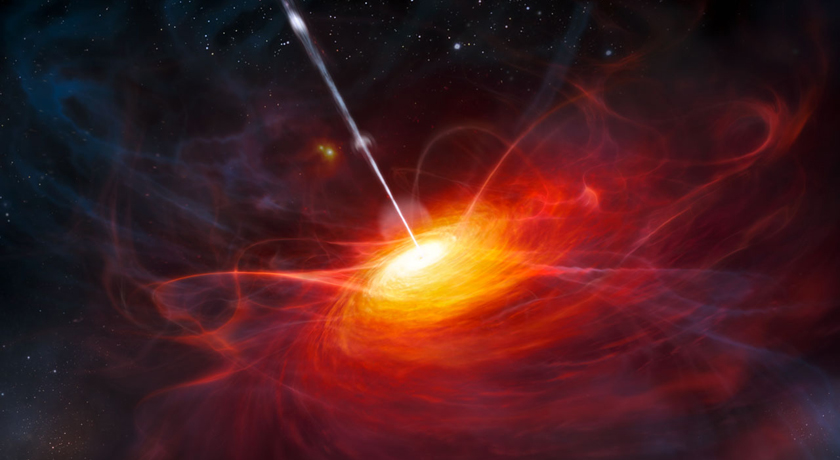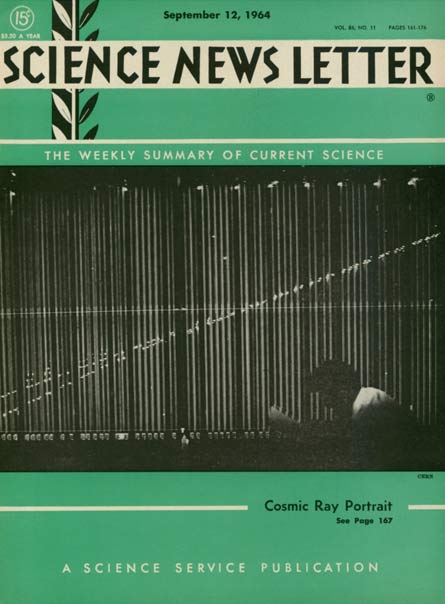Distance to quasars debated
Excerpt from the September 12, 1964 issue of Science News Letter

FAR, FAR AWAY A quasar lights up as interstellar debris swirls around a supermassive black hole in the center of a distant galaxy, as seen in this artist’s illustration.
M. Kornmesser/ESO
 Odd-ball quasars may be closer than they seem — The odd-ball heavenly objects called quasars may be much closer to the earth’s own Milky Way galaxy than astronomers have thought. … They have been regarded as the brightest and most distant objects known. However, they may not be so distant after all. Dr. James Terrell … believes quasars could be within two billion billion miles of earth…. This would place them between the Milky Way galaxy and the Andromeda Nebula. —
Odd-ball quasars may be closer than they seem — The odd-ball heavenly objects called quasars may be much closer to the earth’s own Milky Way galaxy than astronomers have thought. … They have been regarded as the brightest and most distant objects known. However, they may not be so distant after all. Dr. James Terrell … believes quasars could be within two billion billion miles of earth…. This would place them between the Milky Way galaxy and the Andromeda Nebula. — 






